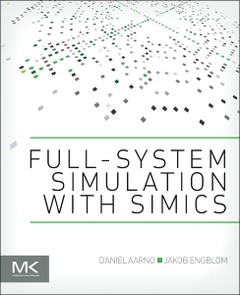Software and System Development using Virtual Platforms Full-System Simulation with Wind River Simics
Auteurs : Aarno Daniel, Engblom Jakob

Virtual platforms are finding widespread use in both pre- and post-silicon computer software and system development. They reduce time to market, improve system quality, make development more efficient, and enable truly concurrent hardware/software design and bring-up. Virtual platforms increase productivity with unparalleled inspection, configuration, and injection capabilities. In combination with other types of simulators, they provide full-system simulations where computer systems can be tested together with the environment in which they operate.
This book is not only about what simulation is and why it is important, it will also cover the methods of building and using simulators for computer-based systems. Inside you?ll find a comprehensive book about simulation best practice and design patterns, using Simics as its base along with real-life examples to get the most out of your Simics implementation. You?ll learn about: Simics architecture, model-driven development, virtual platform modelling, networking, contiguous integration, debugging, reverse execution, simulator integration, workflow optimization, tool automation, and much more.
- Introduction
- Simics Fundamentals
- Develop and Debug Software on Simics
- System Configuration in Simics
- Networking
- Building Virtual Platforms
- DMA – A Concrete Modeling Example
- Simulator Extensions
- Simulator Integration
- Fault Injection
- Intel Architecture
- Concrete examples and Case-Studies
Jakob Engblom has been working with Simics since 2002, handling outbound marketing, inbound marketing, sales and field engineering, academic program and product management. Currently he is a technical marketing manager for tools at Wind River, planning the future of Simics as an end-user product and blogging about Simics. For the past 15 years, he has have worked with various aspects of programming and simulation tools for embedded systems. He has written and presented on a variety of embedded systems topics since 1997, including popular science, trade press, conference papers, journal papers, and book chapters in a wide variety of outlets.
- Distills decades of experience in using and building virtual platforms to help readers realize the full potential of virtual platform simulation
- Covers modeling related use-cases including devices, systems, extensions, and fault injection
- Explains how simulations can influence software development, debugging, system configuration, networking, and more
- Discusses how to build complete full-system simulation systems from a mix of simulators
Date de parution : 09-2014
Ouvrage de 366 p.
19x23.3 cm



